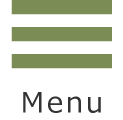- Home
- >
- Exhibition
- >
- Current Exhibitions
Current Exhibitions
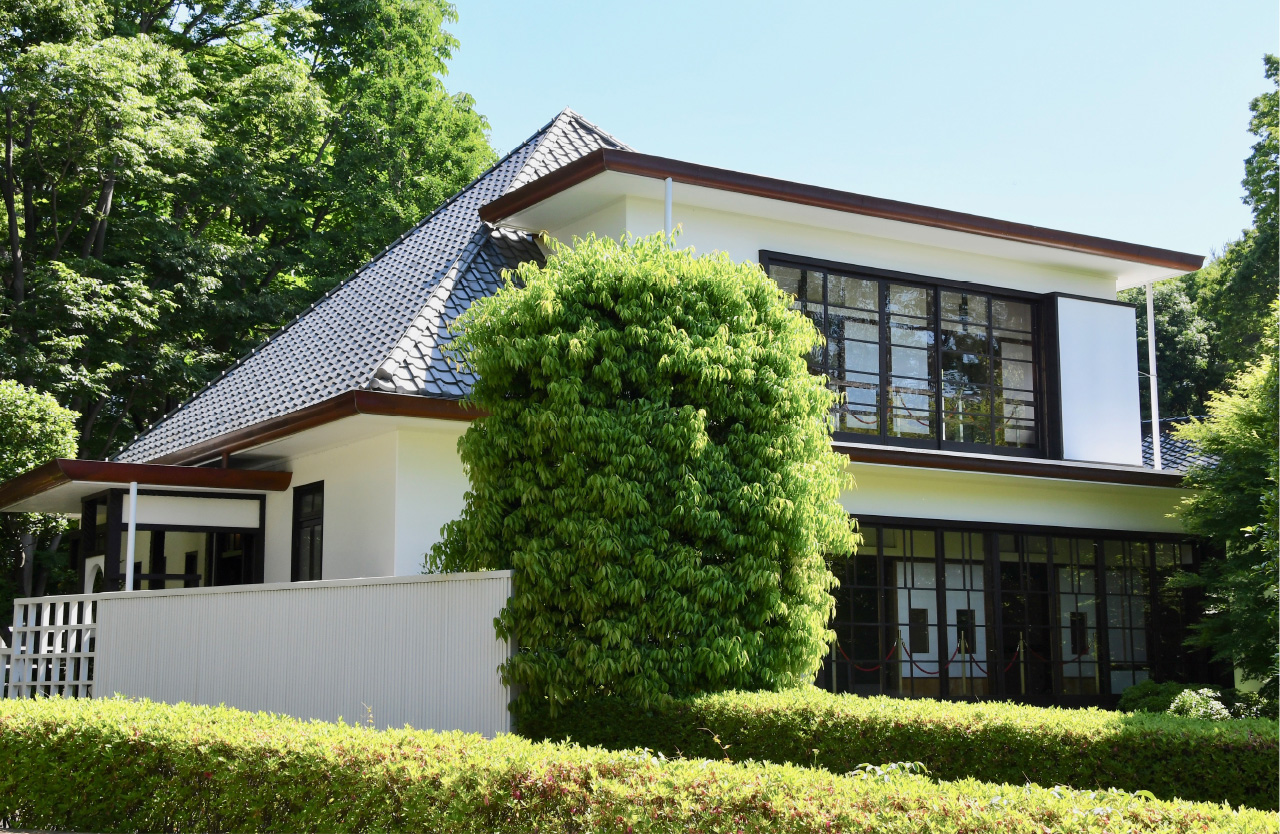
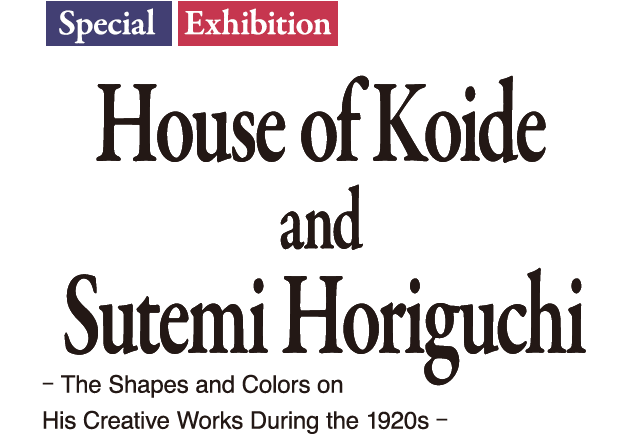
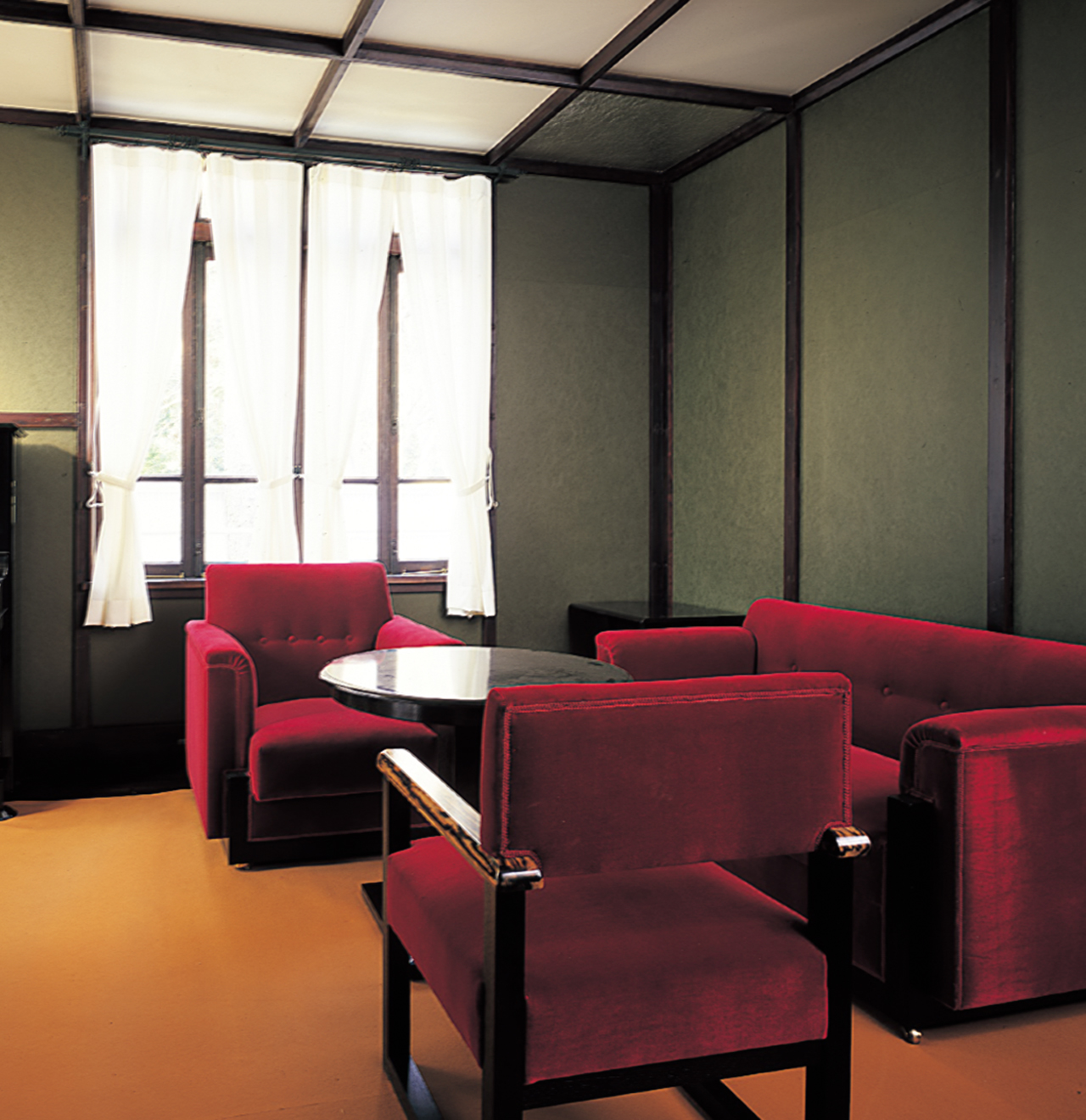

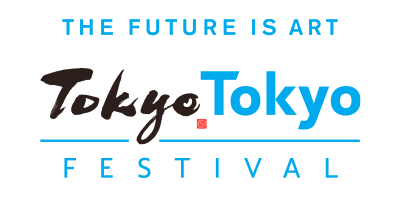
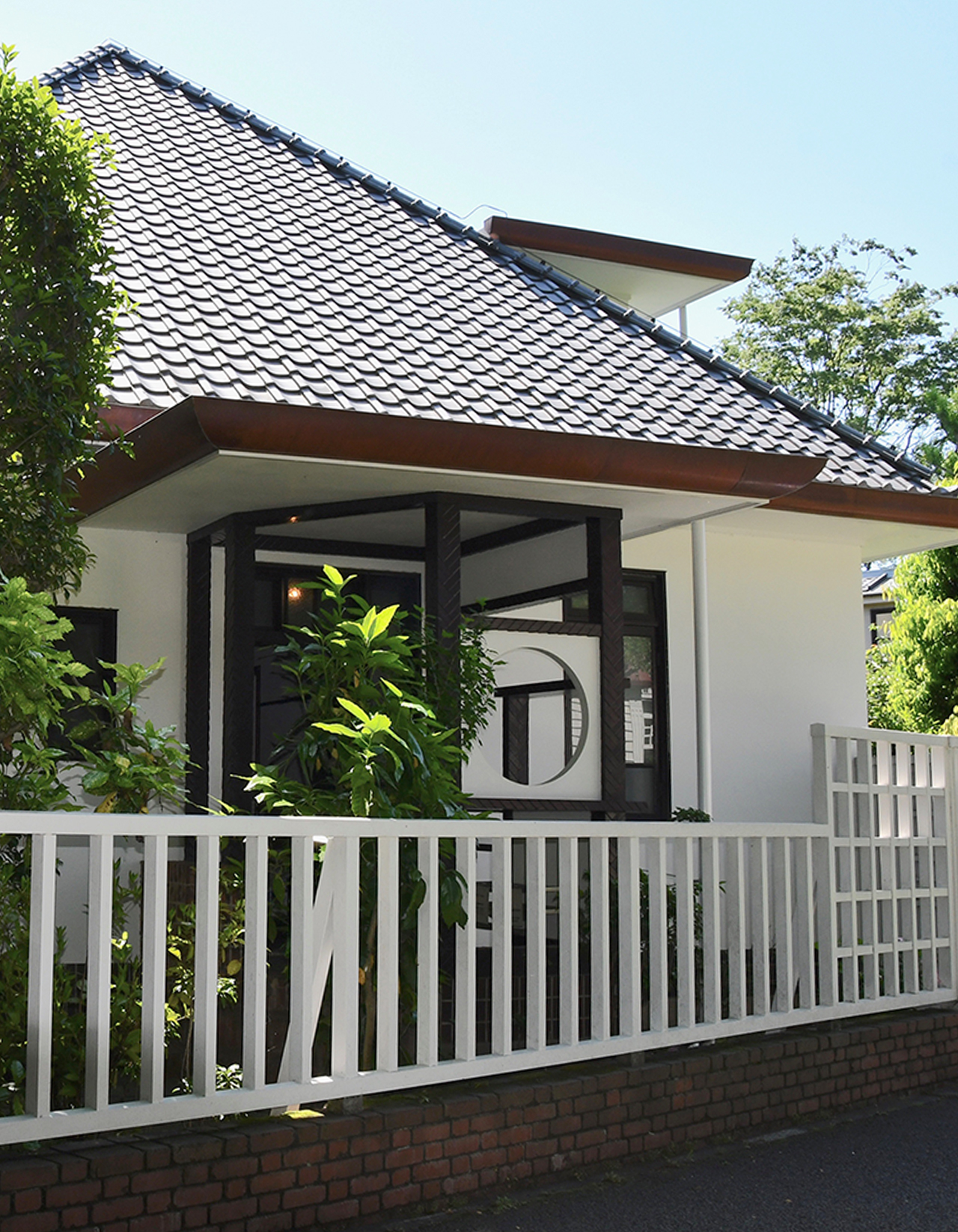
- ■Period: October 16, 2019 (Wednesday) to February 16, 2020 (Sunday)
- ■Venue: Exhibition Room, Edo-Tokyo Open Air Architectural Museum〈How to visit〉
- ■Closed: Every Monday *The following day if Monday is a public holiday.
- ■Closed: Year-end and New Year holidays *December 23 (Monday) – January 1 (Wednesday, public holiday)
- ■Organized by: Tokyo Metropolitan Government, Edo-Tokyo Open Air Architectural Museum operated by the Tokyo Metropolitan Foundation for History and Culture
- ■Fee: Included in the admission fee to the museum.〈Admission〉
Special Exhibition: House of Koide and Sutemi Horiguchi -The Shapes and Colors on His Creative Works During the 1920s-
The House of Koide, then located in the location of present-day Nishikata in Bunkyō Ward, Tokyo, is a wooden two-story house built in 1925 for the homeowner Osamu Koide and his wife Koto as their family retreat.
This house, which commands attention with the shape of its roof and the colors of the reception room, was in effect the first building that architect Sutemi Horiguchi (1895 – 1984) worked on.
Horiguchi was a leader of Bunriha Kenchiku Kai ("Secessionist Architecture Group"), Japan’s first modern architecture movement, founded in 1920.
One of the representative architects of modern Japan, Horiguchi advocated the importance of the aesthetics and artistic aspects of architecture, and spent his lifetime in pursuit of these.
The Edo-Tokyo Open Air Architectural Museum has focused on the historical value of the House of Koide as what is effectively considered Horiguchi’s debut work. In 1997, it removed and reconstructed the house to the Museum, and restored it to its original state.
Since 1998, the house has been on display while being preserved. In March 2019, its value was recognized as “a precious work that presents the rise of the Japanese Modernism Architecture," and it was designated as a Tangible Cultural Property (Structure) of Tokyo.
This exhibition draws attention to the shapes and colors that Sutemi Horiguchi sought in the 1920s, and introduces the main activities and works from the earlier part of his career.
Through that, it reexamines the appeal of the House of Koide and takes a closer look at the origins of Horiguchi’s creations.
Chapter 1: Founding of Bunriha Kenchiku Kai
Sutemi Horiguchi founded Bunriha Kenchiku Kai (“Secessionist Architecture Group"), Japan’s first modern architecture movement, in February 1920 just before his graduation from Tokyo Imperial University.
This movement sought to break away from past architectural styles, and instead pursued a new form of architectural expression that placed the emphasis on aesthetics and artistry.
This chapter features genuine works by Horiguchi after the founding of Bunriha Kenchiku Kai as well as books and other materials, and introduces the venue blueprints, photographs taken during the construction, picture postcards, and other items from the Peace Commemorative Tokyo Exposition held in 1922.
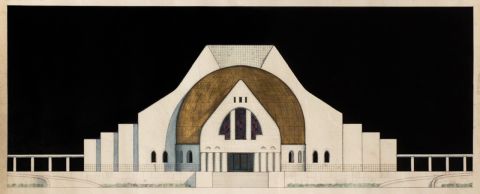
Funeral hall, front view (1920). Property of the Horiguchi Architectural Works Material Archive.
Chapter 2: Study Tour of Europe
In the summer of 1923, Horiguchi departed for Europe in search of new architectural knowledge.
He returned to Japan in spring the following year with a particularly strong appreciation of the Amsterdam School, an architectural movement that had originated in the Netherlands.
He began to introduce modern Dutch architecture to Japan, including authoring and publishing books about Dutch architecture.
This chapter contains panels featuring the photographs of architecture that Horiguchi took during his study tour, and explains the characteristics of the Amsterdam School.
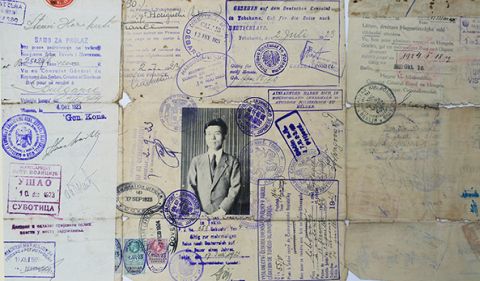
Sutemi Horiguchi’s passport. Property of the Yamazaki Laboratory, Tokyo Institute of Technology.
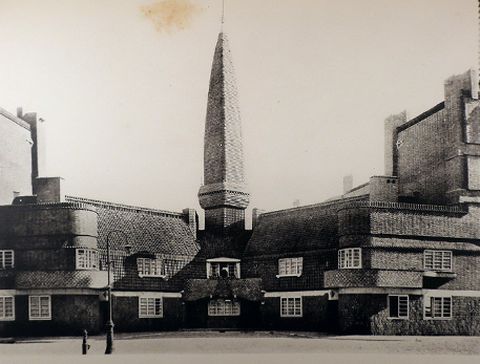
Eigen Haard housing estate (Designed by Michael de Klerk). Extract from Sutemi Horiguchi, Gendai Oranda Kenchiku [Modern Dutch Architecture], 1924, Iwanami Shoten.
Chapter 3: House of Koide
In September 1924 after returning to Japan, the request to design the House of Koide came to Horiguchi.
In June the next year, 1925, the House of Koide was completed as his first residential project.
This house is influenced by the Dutch architectural movement, but at the same time, fuses that with Japanese styling through the use of traditional Japanese construction methods.
This chapter presents the models, blueprints, and photographs of the House of Koide in its current form, and compares the differences between the design drawings and its current form.
It also displays photographs taken during the construction and after its completion, as well as magazines it was featured in, while offering explanations on the characteristics of the house.
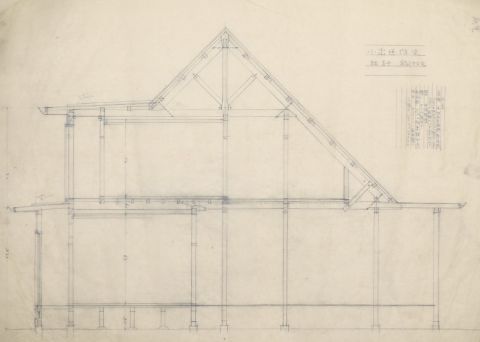
House of Koide, sectional detail and specification (1924). Property of the Horiguchi Architectural Works Material Archive.
Chapter 4: Shiensō, Sōshōkyo, House of Kikkawa
After the completion of the House of Koide, Horiguchi went on to complete three residential projects: Shienso in 1926, Soshokyo in 1927, and the House of Yoshikawa three years after that.
This chapter examines the common points between the House of Koide and the three residential projects designed by Horiguchi during his time in Bunriha Kenchiku Kai, and focuses on the blueprints, photographs, and other materials for Shienso which has particularly much in common with the House of Koide.
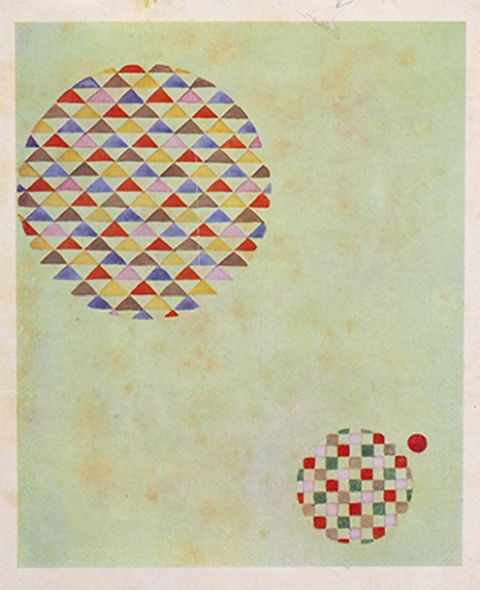
Shienso, carpet artwork. Property of the Horiguchi Architectural Works Material Archive.
Related Projects
Tatemono-en Seminar (Three Sessions)
- Venue:
- Visitor Center, Exhibition Room
- Speaker:
- Professor Taisuke Yamazaki, Tokyo Tech Museum and Archives
- Participation:
- fees are applicable
- Details of the schedule and registration will be available on the website.
- *The sessions will be held in the Japanese language only.
Related Projects
Museum Talk
Highlights of the "House of Koide and Sutemi Horiguchi"
- Date and time:
- December 21 (Saturday), 2:30 p.m.~
- Venue:
- Exhibition Room
- Speaker:
- Ayumi Ando, construction technology expert
- *Separate museum admission fees are applicable.
- *The session will be held in the Japanese language only.
© EDO-TOKYO OPEN AIR ARCHITECTURAL MUSEUM All rights reserved.



